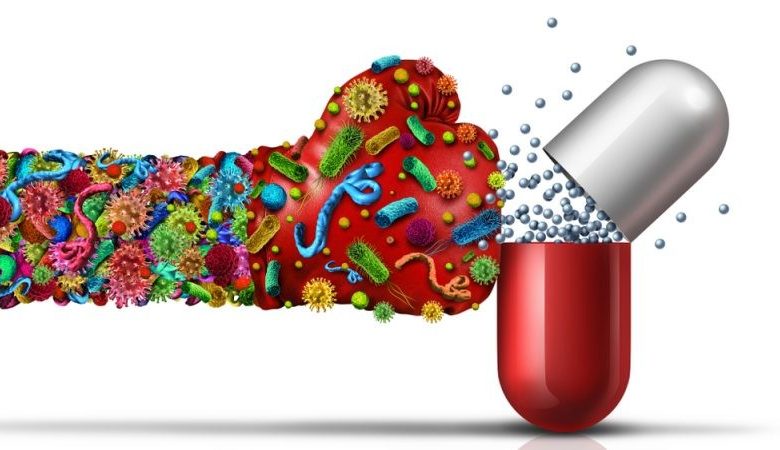The 10 Strongest Antibiotics for Infection Control

Bacterial infections are relatively common occurrences and can affect people of all ages, genders, and backgrounds. The prevalence of bacterial infections varies depending on factors such as geographic location, socioeconomic status, age, underlying health conditions, and environmental factors. While many bacterial infections are mild and resolve on their own or with minimal treatment, others can be severe or life-threatening if left untreated.
Around 7.7 million deaths around the world were found linked to bacterial infection. That is 13.6%, or 1 in 8, of all global deaths. This makes bacterial infections the second-leading cause of death globally.
Common bacterial infections include:
- Upper Respiratory Tract Infections (URTIs): These infections affect the nose, sinuses, throat, and other upper respiratory structures. Examples include the common cold, sinusitis, and pharyngitis (sore throat).
- Urinary Tract Infections (UTIs): UTIs occur when bacteria infect the urinary tract, including the bladder, urethra, ureters, and kidneys. They are more common in women than men and can cause symptoms such as urinary urgency, frequency, and pain.
- Skin and Soft Tissue Infections: Bacterial infections of the skin and soft tissues can result from cuts, wounds, insect bites, or underlying skin conditions. Examples include cellulitis, impetigo, and abscesses.
- Gastrointestinal Infections: These infections affect the digestive system and can result from consuming contaminated food or water or through person-to-person transmission. Common bacterial causes include Salmonella, Escherichia coli (E. coli), and Campylobacter.
- Sexually Transmitted Infections (STIs): Certain bacterial pathogens can be transmitted through sexual contact and cause infections such as gonorrhea, chlamydia, and syphilis.
- Pneumonia: Bacterial pneumonia occurs when bacteria infect the lungs, leading to inflammation and respiratory symptoms such as cough, fever, and difficulty breathing. Streptococcus pneumoniae is a common bacterial cause of pneumonia.
- Bacterial Meningitis: This is an infection of the membranes surrounding the brain and spinal cord, typically caused by bacteria such as Neisseria meningitidis, Streptococcus pneumoniae, or Haemophilus influenzae type b (Hib).
While bacterial infections are common, certain populations may be more susceptible due to factors such as age, weakened immune systems, or underlying health conditions. For example, infants, young children, older adults, pregnant women, and individuals with chronic medical conditions or compromised immune systems may be at higher risk of developing severe bacterial infections.
What is a strong antibiotic?
A strong antibiotic is a medication used to treat bacterial infections that are resistant to milder antibiotics. These antibiotics are typically reserved for serious infections or cases where standard treatments have failed. Strong antibiotics are characterized by their potency, effectiveness against a wide range of bacteria, and ability to penetrate tissues and reach the site of infection. They may be administered orally, intravenously, or topically, depending on the severity and location of the infection.
Strong antibiotics are often classified based on their spectrum of activity, mechanism of action, and resistance profile. Broad-spectrum antibiotics, for example, are effective against a wide range of bacteria, including both Gram-positive and Gram-negative bacteria. They are commonly used in empiric therapy, where the infecting organism is unknown or when multiple bacterial species are suspected. Narrow-spectrum antibiotics, on the other hand, target specific types of bacteria and are often preferred when the infecting organism has been identified and its susceptibility to antibiotics is known.
In terms of mechanism of action, strong antibiotics may work by inhibiting bacterial cell wall synthesis, disrupting bacterial protein synthesis, interfering with bacterial nucleic acid synthesis, or inhibiting bacterial metabolism. Some antibiotics exert their effects by disrupting essential bacterial functions or by targeting specific bacterial components, such as enzymes or cell membrane proteins.
Resistance to antibiotics is a significant concern in healthcare, as bacteria can develop mechanisms to evade the effects of antibiotics through mutations or acquisition of resistance genes. Strong antibiotics are designed to overcome or bypass these resistance mechanisms, either by targeting different bacterial structures or by possessing unique mechanisms of action that make them less susceptible to resistance.
The 10 strongest antibiotics for infection
Antibiotics represent one of modern medicine’s most potent tools against bacterial infections, but their effectiveness can vary depending on factors such as the specific bacterial strain causing the infection and individual patient characteristics. Despite this variability, certain antibiotics stand out for their broad-spectrum activity and potency against a wide range of bacterial pathogens. Here, we delve deeper into 10 such antibiotics renowned for their efficacy in combating bacterial infections:
1. Vancomycin: Vancomycin, a glycopeptide antibiotic, is a cornerstone in the treatment of serious Gram-positive bacterial infections. It is particularly effective against Methicillin-Resistant Staphylococcus aureus (MRSA), a notorious pathogen notorious for its resistance to multiple antibiotics. Vancomycin is also employed in treating other resistant Gram-positive organisms, making it an invaluable asset in combating challenging infections.
2. Carbapenems (e.g., Imipenem, Meropenem): Carbapenems are broad-spectrum antibiotics renowned for their activity against both Gram-positive and Gram-negative bacteria. They are often reserved for severe infections or those caused by multidrug-resistant pathogens due to their potent bactericidal action and broad coverage.
3. Linezolid: Linezolid, an oxazolidinone antibiotic, represents a vital therapeutic option for combating Gram-positive infections, including those caused by MRSA and vancomycin-resistant Enterococcus (VRE). Available in oral and intravenous formulations, linezolid is utilized for its ability to tackle challenging infections when other antibiotics fail.
4. Daptomycin: Daptomycin, a lipopeptide antibiotic, stands out for its efficacy against Gram-positive bacteria, including MRSA and VRE. Often employed in treating skin and soft tissue infections, as well as bloodstream infections, daptomycin’s mechanism of action makes it an invaluable tool in the fight against antibiotic-resistant pathogens.
5. Tigecycline: Tigecycline, a glycylcycline antibiotic, boasts broad-spectrum activity against both Gram-positive and Gram-negative bacteria, including multidrug-resistant strains. As a last-line treatment for complicated intra-abdominal and skin infections, tigecycline plays a critical role in managing infections when other therapeutic options are limited.
6. Ceftazidime-avibactam: Ceftazidime-avibactam, a combination antibiotic comprising a cephalosporin and a beta-lactamase inhibitor, offers potent activity against a spectrum of Gram-negative bacteria. Its effectiveness against beta-lactamase-producing organisms makes it a valuable asset in combating multidrug-resistant infections.
7. Colistin (Polymyxin E): Colistin, a polymyxin antibiotic, is deployed as a last resort against multidrug-resistant Gram-negative pathogens, including Acinetobacter baumannii, Pseudomonas aeruginosa, and certain Enterobacteriaceae. Despite its potential for nephrotoxicity and neurotoxicity, colistin remains a critical tool in managing infections resistant to other antibiotics.
8. Aztreonam: Aztreonam, a monobactam antibiotic, demonstrates potent activity against Gram-negative bacteria, including some resistant strains. Frequently utilized in patients with allergies to penicillin or cephalosporins, aztreonam offers an alternative therapeutic option for combating challenging infections.
9. Ertapenem: Ertapenem, a carbapenem antibiotic, possesses broad-spectrum activity against both Gram-positive and Gram-negative bacteria. It finds application in treating various infections, such as complicated urinary tract infections and intra-abdominal infections, owing to its potency and favorable safety profile.
10. Gentamicin: Gentamicin, an aminoglycoside antibiotic, is indispensable in managing severe infections caused by Gram-negative bacteria, including Escherichia coli, Klebsiella pneumoniae, and Pseudomonas aeruginosa. Often used in combination therapy for its synergistic effects, gentamicin plays a vital role in combating life-threatening infections.
Despite the potency and efficacy of these antibiotics, it’s crucial to emphasize the importance of judicious antibiotic use. Overuse and misuse of antibiotics contribute to the emergence of resistance, posing a significant public health threat. Therefore, healthcare providers must consider factors such as the type and severity of infection, local resistance patterns, and individual patient characteristics when selecting antibiotics. By adhering to evidence-based prescribing guidelines and implementing antibiotic stewardship principles, healthcare professionals can optimize therapeutic outcomes while mitigating the risk of antibiotic resistance. As the landscape of antibiotic resistance continues to evolve, ongoing research and vigilance are essential to preserve the effectiveness of these invaluable therapeutic agents for current and future generations.





